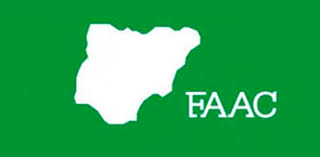The Federation Accounts Allocation Committee (FAAC) has disbursed a total of N1.578 trillion to the Federal Government, states, and local governments for the month of March. This allocation is part of the revenue sharing mechanism in Nigeria, where funds are distributed among the three tiers of government based on a predetermined formula.

Breakdown of the Allocation
While the exact breakdown of the allocation might not be publicly available, the distribution typically follows a formula that allocates specific percentages to the Federal Government, states, and local governments. The Federal Government usually receives the largest share, followed by the states and then the local governments.
Impact on Government Operations
The FAAC allocation is crucial for the operation of government at all levels. The funds are used to finance various government activities, including infrastructure development, payment of salaries, and implementation of social programs. The allocation for March is expected to help governments meet their financial obligations and deliver essential services to citizens.
Economic Implications
The FAAC allocation can have significant implications for the economy. The injection of funds into the system can stimulate economic activity, particularly at the state and local government levels. However, the effectiveness of the allocation in driving economic growth depends on how efficiently the funds are utilized by governments.
Challenges and Opportunities
Despite the importance of FAAC allocations, there are challenges associated with revenue distribution in Nigeria. Some of these challenges include:
- Revenue Shortfalls: Fluctuations in oil prices and other revenue sources can lead to shortfalls in FAAC allocations.
- Inefficient Fund Utilization: In some cases, governments might not utilize the allocated funds efficiently, which can impact the effectiveness of the allocation.
- Dependence on Federal Allocation: Many states and local governments rely heavily on FAAC allocations, which can make them vulnerable to fluctuations in federal revenue.
Conclusion
The N1.578 trillion FAAC allocation for March is a significant development for governments in Nigeria. While the allocation presents opportunities for governments to finance their activities, it’s essential for them to utilize the funds efficiently to drive economic growth and development.

















